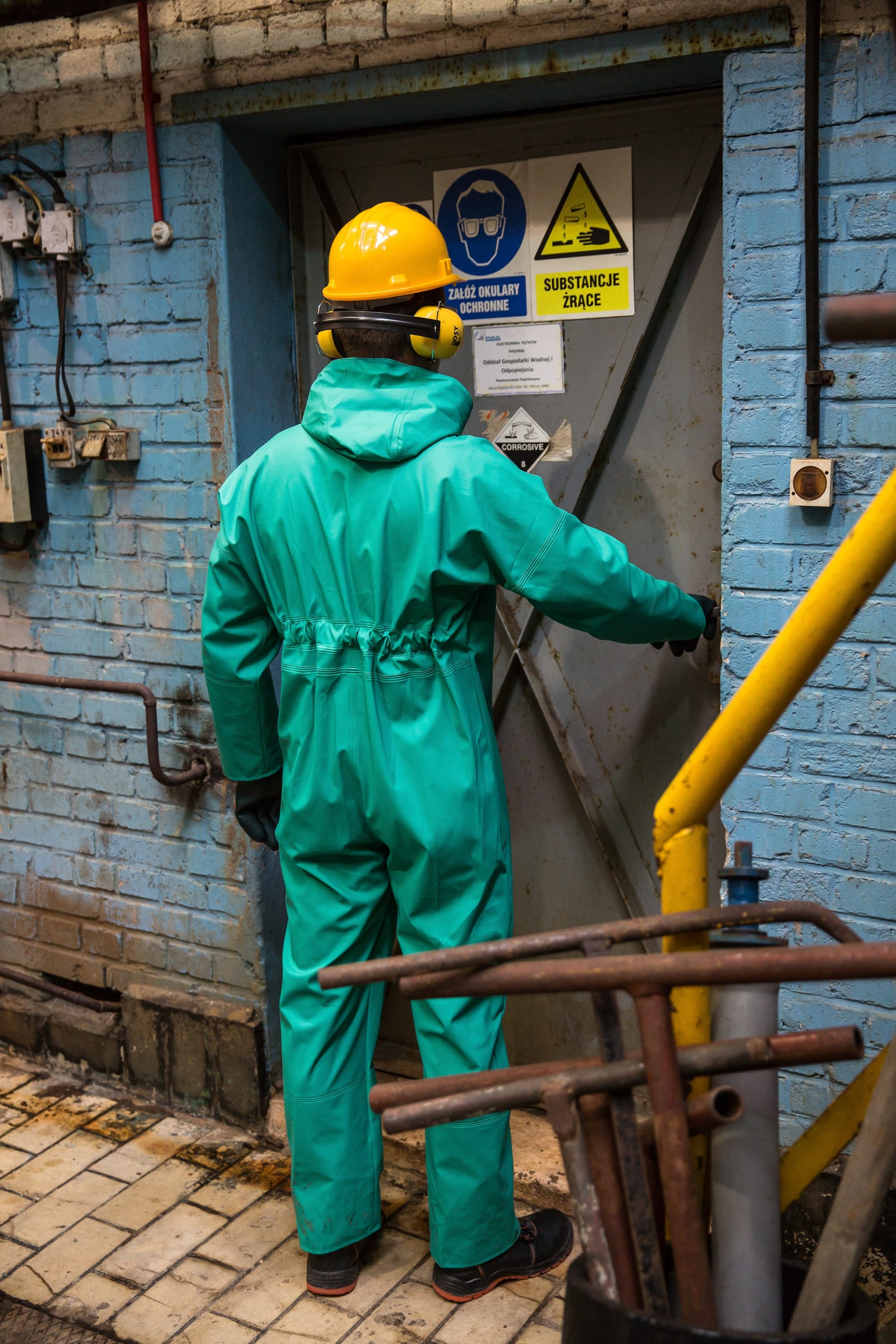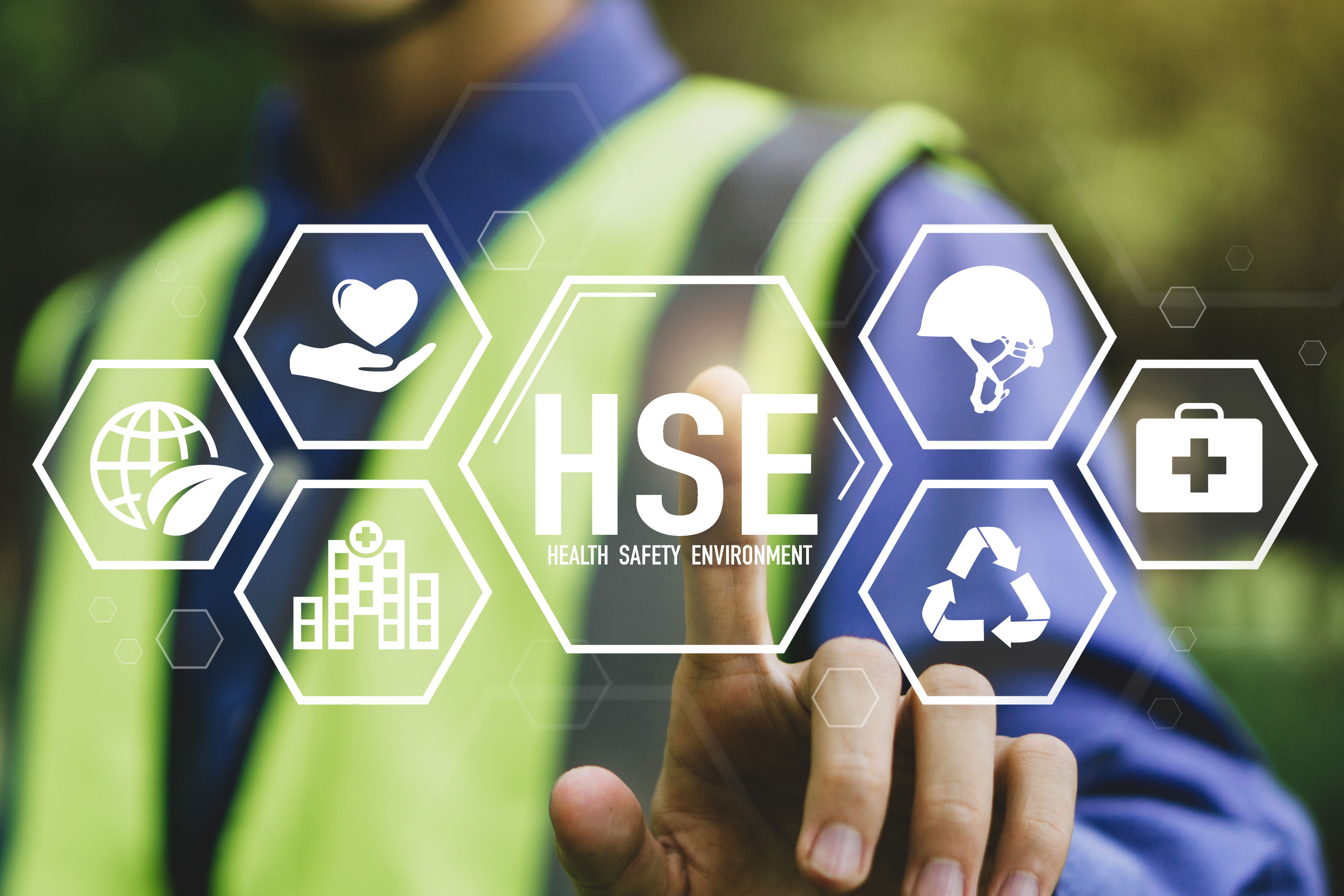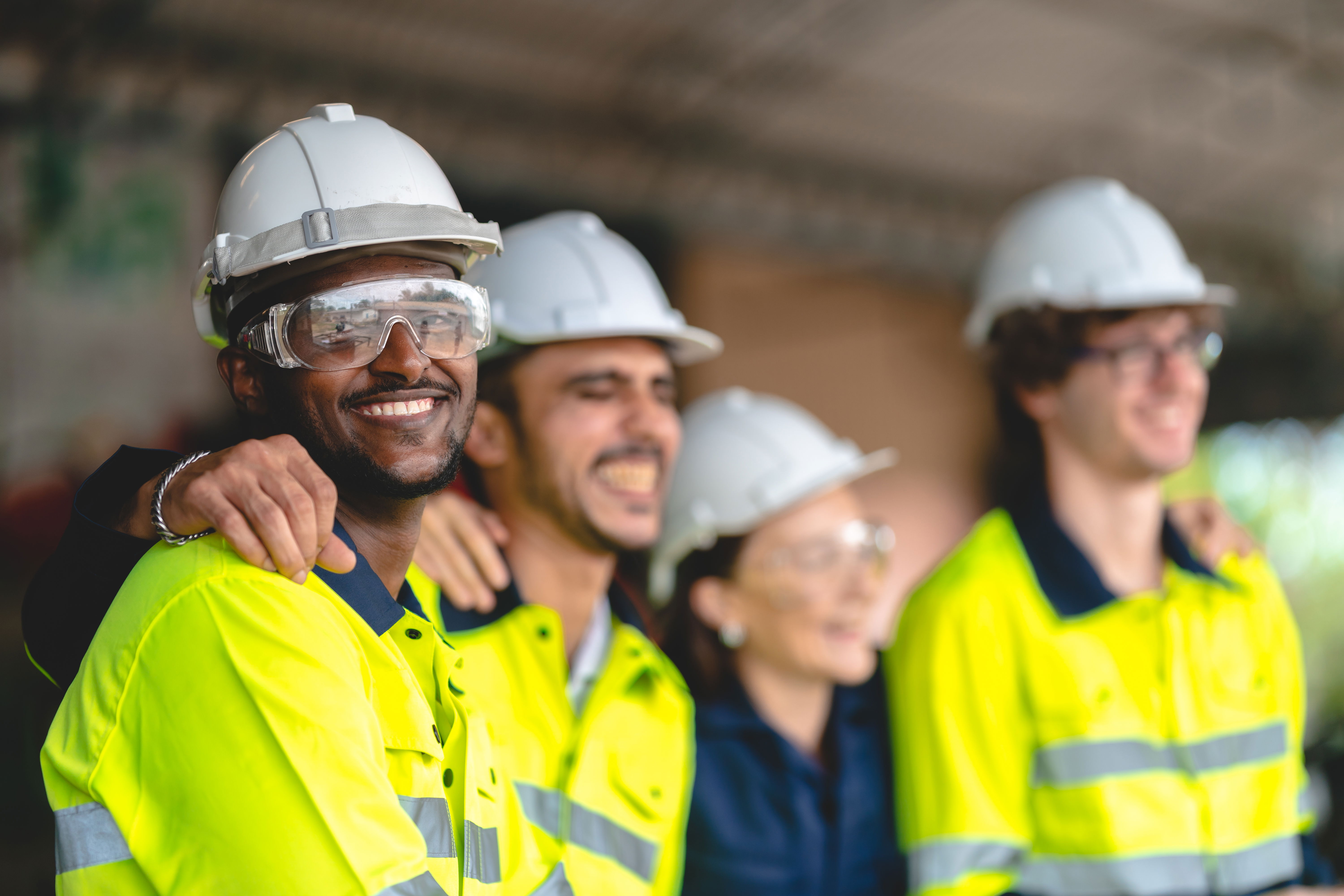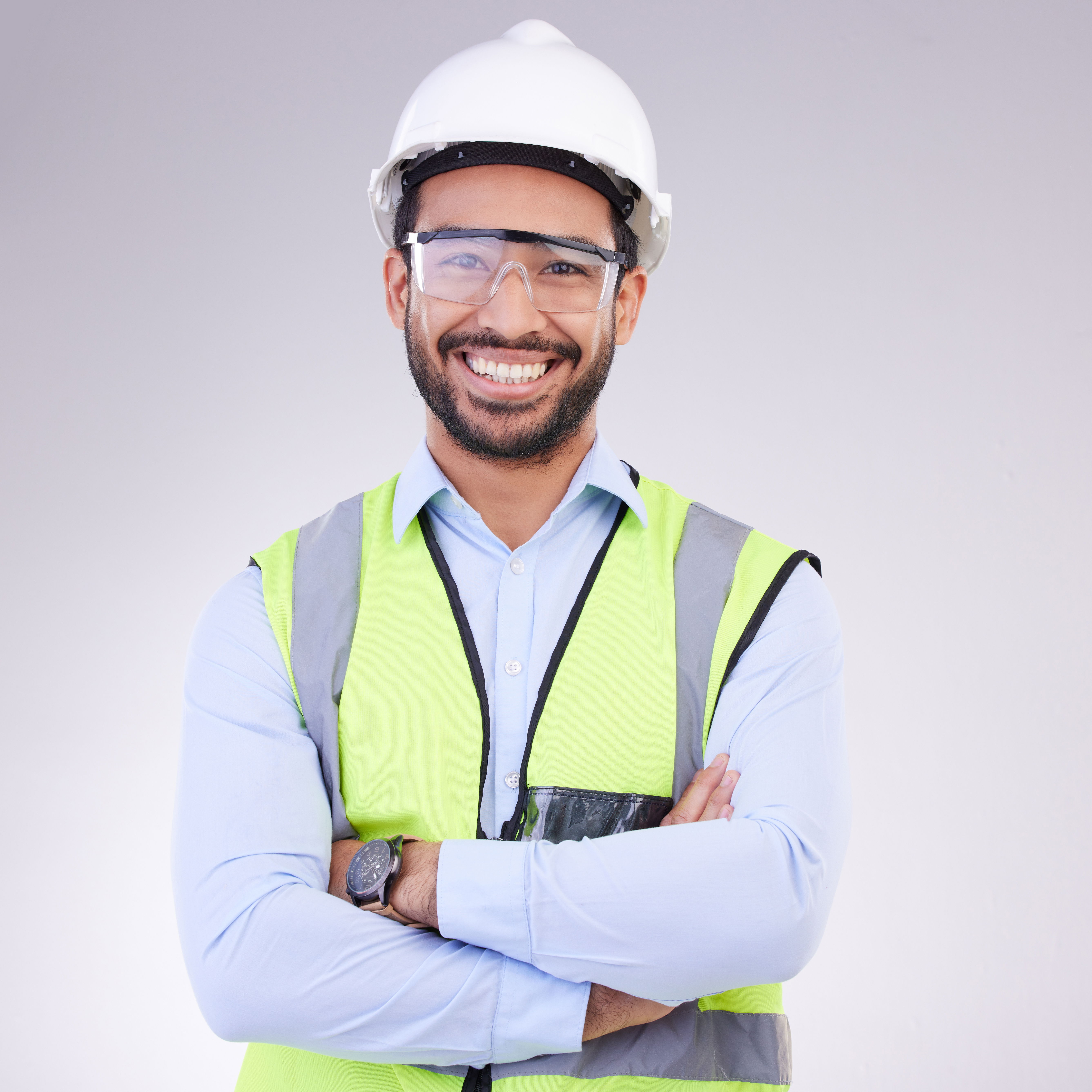Continual Learning in Safety Practices for Painting Professionals

Key Features:
- Highlights the importance of adapting to new safety information and technologies, such as the use of low-VOC paints and advanced personal protective equipment, to improve workplace safety and health outcomes.
- Beyond Compliance:Discusses the significance of going beyond basic compliance to foster a culture of safety excellence, including proactive measures that exceed standard requirements for the wellbeing of all team members.
- Embracing Innovations in Safety Equipment and Techniques:Focuses on the adoption of the latest safety tools and methods, including sophisticated personal protective gear and new technological solutions, to enhance safety standards in painting operations.
Continual Learning in Safety Practices for Painting Professionals
Hello, painting professionals and safety enthusiasts! Today on Lightmen Daily, we're delving into an essential topic for all painting professionals - Continual Learning in Safety Practices. In an industry that constantly evolves, staying updated on safety knowledge is not just beneficial; it's imperative. Ready to enhance your safety acumen? Hit subscribe and join us on this enlightening journey!
The Ever-Changing Landscape of Painting Safety
The painting industry is dynamic, with new products, techniques, and regulations continually emerging. Keeping abreast of these changes is vital to maintain safety at work.
Adapting to Change
One of the most critical aspects of safety in painting is adapting to new information and technologies. This includes understanding the latest in low-VOC paints or new PPE advancements. Low-VOC (Volatile Organic Compounds) paints are essential for reducing harmful emissions, and staying updated on these products can significantly impact the health of both painters and clients.
For instance, we prioritize using environmentally friendly products that not only deliver superior results but also ensure a safer working environment. Our team regularly attends training sessions to stay informed about the newest products on the market, ensuring we can provide the best options for our clients and the safest conditions for our workers.
Beyond Compliance
It's not just about following regulations; it's about striving for safety excellence. This means going beyond the minimum requirements to protect the wellbeing of workers and clients. Regularly reviewing safety protocols, investing in high-quality safety gear, and promoting a culture of safety within the team are all crucial steps.
I remember a project where we decided to implement additional safety measures beyond the standard requirements. This not only prevented potential accidents but also built a stronger team spirit as everyone felt genuinely cared for. It’s this commitment to safety that sets a professional painting service apart.
Embracing Innovations in Safety Equipment and Techniques
The array of safety tools and techniques available to painting professionals is ever-expanding.
Advanced Personal Protective Equipment (PPE)
Investing in the latest PPE can make a significant difference in safety. This includes respirators, gloves, and protective eyewear designed to offer better protection and comfort. For example, new respirators that provide better filtration without compromising breathability can enhance safety during prolonged use of paints and solvents.
Technological Advancements
Embracing technology can also boost safety. From mobile apps that offer safety training modules to advanced scaffolding systems that provide more stability, technology is a game-changer. We have integrated technology into our safety practices by using apps for safety audits and training, ensuring our team is always prepared.
Practical Training and Drills
Regular safety drills and practical training sessions can help reinforce safety protocols. It's one thing to know the safety guidelines and another to put them into practice effectively. Drills help in muscle memory and quick response in case of emergencies.
I recall a scenario where regular fire drills paid off when an actual fire broke out on a neighboring site. Our team knew exactly how to respond, which minimized panic and ensured everyone evacuated safely. Such preparedness is invaluable.
Protecting What Matters Most
Health and Wellbeing
The health and wellbeing of workers should always be the top priority. This includes mental health, as the stress of unsafe working conditions can significantly impact a worker’s overall health. Promoting a healthy work-life balance and providing access to mental health resources are steps every company should take.
Client Safety
Ensuring the safety of clients during and after a project is also crucial. This includes proper ventilation when using certain products and ensuring no hazardous materials are left behind.
Continual Learning and Improvement
Workshops and Seminars
Attending industry workshops and seminars is an excellent way to stay updated on the latest safety practices. These events provide opportunities to learn from experts and network with other professionals.
Certifications and Courses
Encouraging the team to pursue safety certifications and courses can further enhance their knowledge and skills. Certifications from recognized bodies not only improve safety standards but also boost the credibility of the business.

Enhancing Safety Through Innovation
In the painting industry, safety is paramount. We believe that enhancing safety through innovation is not just a priority but a necessity. By adopting advanced equipment and safer techniques, we can ensure a safer working environment for our team and superior results for our clients.
Advanced Equipment
Improved Respirators
Respirators are a crucial piece of safety equipment for painters, protecting against harmful fumes and particles. Recent innovations in respirator technology have led to models that offer better filtration, more comfort, and ease of use. These advanced respirators provide superior protection without compromising on comfort, making it easier for painters to wear them for extended periods.
Using the latest respirators, painters can work more efficiently and safely, knowing they are well-protected. The difference in air quality and overall safety is noticeable, leading to fewer health issues and a more productive workforce.
Ergonomically Designed Tools
Ergonomics plays a significant role in reducing injury risks. Tools designed with ergonomics in mind help reduce strain and fatigue, which are common issues in painting jobs. From brushes and rollers to ladders and scaffolding, ergonomic tools make a huge difference.
For instance, an ergonomically designed brush can reduce wrist strain, allowing for longer periods of work without discomfort. We ensure that our team has access to the best ergonomic tools available, which not only enhance safety but also improve the quality of work.
Safer Techniques
Boosting Efficiency While Minimizing Hazards
Innovation in painting techniques has also played a critical role in enhancing safety. Adopting new methods that boost efficiency while minimizing hazards is essential, especially in high-risk scenarios. For example, using spray painting techniques in certain projects can reduce the time workers spend in potentially hazardous environments.
Additionally, techniques that involve less manual labor and more automated processes can significantly reduce the risk of repetitive strain injuries and accidents. We continuously update our methods to incorporate the latest safe and efficient practices.
The Power of Regular Training and Workshops
Continuous education is crucial in staying safe. Regular workshops and training sessions keep safety skills sharp and knowledge current.
Continuous Education
Staying updated with the latest safety protocols and innovations is vital. Regular training ensures that all team members are aware of the best practices and can implement them effectively. Workshops focused on safety provide hands-on experience with new tools and techniques, reinforcing the importance of safety in every aspect of the job.
In my experience, regular training sessions have been invaluable. They not only reinforce existing knowledge but also introduce new safety measures that can be immediately implemented on-site. These sessions often reveal simple yet effective safety tips that can prevent accidents and injuries.
Keeping Safety Skills Sharp
Safety skills, like any other skills, can diminish over time if not regularly practiced. Workshops and training sessions are an excellent way to keep these skills sharp. They provide an opportunity for painters to practice emergency procedures, use new equipment, and refresh their knowledge on safety standards.
We organize regular training sessions to ensure our team is always prepared. These sessions cover everything from proper ladder usage to the latest in personal protective equipment (PPE). The goal is to create a culture of safety that permeates every aspect of our work.
Current Knowledge
The painting industry is dynamic, with new products, techniques, and regulations continually emerging. Keeping abreast of these changes is vital to maintain safety at work. Understanding the latest in low-VOC paints or new PPE advancements can make a significant difference.For example, knowing which low-VOC paints are most effective can help reduce the risk of respiratory issues. Staying informed about new regulations ensures compliance and reduces the risk of legal issues. We prioritize continuous learning to stay ahead of industry changes and maintain the highest safety standards.
Lifelong Safety Learning
Safety in the painting industry is not a one-time achievement but an ongoing commitment. We believe that continuous education and training are key to maintaining and enhancing workplace safety. Comprehensive training programs and regular updates ensure that our team stays informed and prepared for any situation. Let's delve into the importance of lifelong safety learning and how it can transform not just individual painters but entire organizations.
Comprehensive Training
Basic Safety Protocols
Every painter, whether a novice or a seasoned professional, must have a solid understanding of basic safety protocols. This includes the proper use of personal protective equipment (PPE), understanding material safety data sheets (MSDS), and knowing the correct procedures for handling and disposing of hazardous materials.In my experience, even simple protocols like correctly wearing a respirator or safely handling paint thinners can make a significant difference in preventing accidents and ensuring a safe working environment. Comprehensive training programs cover these basics thoroughly, ensuring that all team members are on the same page.
Complex Scenarios
Beyond the basics, it's crucial to prepare for more complex scenarios that might arise on the job. This includes working at heights, confined space entry, and dealing with unexpected chemical spills. Advanced training sessions simulate these situations, allowing painters to practice and develop their response strategies in a controlled environment.
For instance, a high-rise painting project requires specialized training in using scaffolding and harness systems. We ensure our team is well-versed in these techniques, reducing the risk of falls and other related accidents.
Reinforcement and Updates
Refreshing Existing Knowledge
Safety knowledge can fade over time if not regularly reinforced. Regular training sessions help refresh and reinforce what has already been learned. This continuous reinforcement ensures that safety practices become second nature, reducing the likelihood of mistakes.
For example, annual refresher courses on hazardous materials handling keep these critical skills sharp. We schedule these sessions to keep our team updated and confident in their safety skills.
Expanding Knowledge
The painting industry is constantly evolving, with new products, techniques, and regulations emerging regularly. Staying updated on these changes is essential. Training programs should not only refresh existing knowledge but also introduce new information and best practices.
For instance, the introduction of low-VOC (volatile organic compounds) paints has changed how painters approach projects. These environmentally friendly options require specific handling and application techniques. Continuous learning ensures our team is always informed about the latest developments and can apply them effectively.
Cultivating a Safety-First Culture
Individual Benefits
Continuous learning in safety practices greatly benefits individual painters. It boosts their confidence, improves their skills, and ensures their well-being. Knowledgeable and well-trained painters are more likely to avoid accidents and injuries, leading to a healthier, more productive workforce.
We have seen firsthand how ongoing education empowers our team members. They approach their work with greater assurance and competence, knowing they have the knowledge and tools to stay safe.
Team and Organizational Benefits
A commitment to lifelong safety learning fosters a broader culture of safety within teams and organizations. When every team member prioritizes safety, it creates a supportive environment where everyone looks out for each other. This collective approach to safety enhances overall morale and productivity.
In my experience, fostering a safety-first culture leads to fewer accidents and disruptions. It also improves team cohesion as members trust that their colleagues are equally committed to maintaining a safe work environment. We have cultivated such a culture, and the results are evident in our team's performance and client satisfaction.

Safety as a Collective Commitment
Safety in the painting industry isn't just an individual effort; it's a collective commitment that involves everyone on the team. When everyone is dedicated to safety, it becomes an integral part of the work culture, influencing every decision and action on the job site. We believe that fostering a shared responsibility for safety is essential for both the well-being of our team and the success of our projects.
Shared Responsibility
Individual Commitment
Each team member's commitment to safety is the first step toward creating a safe working environment. This means everyone, from the newest apprentice to the most experienced painter, must prioritize safety in their daily tasks. Simple actions like wearing the proper PPE, following safety protocols, and looking out for potential hazards are fundamental.
In my experience, when each individual takes safety seriously, it reduces the risk of accidents and creates a more efficient and pleasant work environment. It's not just about following rules; it's about caring for your colleagues and ensuring everyone goes home safe at the end of the day.
Team Collaboration
Safety is significantly enhanced when team members collaborate and communicate effectively. Regular safety meetings, open discussions about potential risks, and collaborative problem-solving are crucial. We encourage our team to share their observations and suggestions for improving safety practices.
For example, a simple conversation about ladder safety can prevent falls. When team members share their insights and experiences, it helps everyone understand the importance of adhering to safety protocols and fosters a sense of mutual responsibility.
Raising Industry Standards
Setting an Example
A strong safety culture within a company not only protects its employees but also sets a high standard for the industry. When a company like ours demonstrates a commitment to safety, it sends a message to clients, competitors, and the community that safety is a top priority.
This commitment can be seen in the meticulous attention to detail in every project, the continuous investment in safety training, and the adoption of the latest safety technologies and techniques. By setting this example, we contribute to raising the overall safety standards in the painting industry.
Client Trust and Confidence
Clients are more likely to trust and engage with companies that prioritize safety. When clients see that a company is dedicated to protecting its workers and delivering safe, high-quality work, it builds confidence in that company's professionalism and reliability. This trust can lead to repeat business and positive referrals, further establishing the company’s reputation in the market.
Embracing Innovations in Safety Equipment and Techniques
Advanced Equipment
Innovations in safety equipment have significantly improved the protection available to painting professionals. From improved respirators that provide better protection against harmful fumes to ergonomically designed tools that reduce strain and injury risks, advanced equipment plays a vital role in enhancing safety.
For instance, we continually invest in the latest safety gear to ensure our team is protected. High-quality respirators, protective clothing, and fall protection systems are just a few examples of the advanced equipment we use to safeguard our painters.
Safer Techniques
Adopting new, safer techniques is another way to minimize hazards and boost efficiency. Techniques such as using low-VOC paints to reduce harmful emissions or employing safer scaffolding systems can significantly impact the safety of a job site.
One memorable project involved a high-rise building where the use of advanced scaffolding systems not only made the work safer but also more efficient. By embracing these innovations, we were able to complete the project ahead of schedule without compromising safety.
The Power of Regular Training and Workshops
Continuous Education
Continuous education is crucial in staying safe. Regular workshops and training sessions keep safety skills sharp and knowledge current. We schedule regular safety training sessions to ensure our team is always up-to-date with the latest safety practices and regulations.
These sessions cover everything from basic safety protocols to complex scenarios, such as handling hazardous materials or working in confined spaces. Continuous education ensures that our team can respond effectively to any situation, minimizing the risk of accidents.
Reinforcement and Updates
Safety training isn’t a one-time event; it needs constant reinforcement. Regularly updating training materials and practices to reflect new regulations, techniques, and equipment is essential. This ensures that safety knowledge is not only refreshed but also expanded upon.
For example, annual refresher courses on fall protection ensure that all team members, regardless of their experience level, remain vigilant and prepared to use the equipment correctly. This continuous learning process helps maintain a high standard of safety across all projects.
Conclusion: The Bedrock of Painting Professionalism
In conclusion, continual learning in safety practices forms the foundation of modern painting professionalism. Embracing change to enhance the most crucial aspect of our work – safety – is not just beneficial but imperative. Our commitment to safety through shared responsibility, embracing innovations, and continuous education sets us apart as leaders in the industry.
Safety is a collective commitment that elevates the entire industry, setting new standards and ensuring that every project is completed without incident. By prioritizing safety, we protect our team, our clients, and the quality of our work.
Outro: Stay Informed, Stay Safe
Thanks for joining us on Lightmen Daily! We hope this session motivates you to keep advancing your safety knowledge. If you found this useful, please give us a thumbs up. Don't forget to subscribe for more insights into the painting industry. Share your experiences with safety training in the comments below. Stay informed, stay safe, and paint with confidence!
Do You Have Questions? Give Us A Call With Any & All! 503-389-5758
-
People Also Ask:
What is Continual Learning in Safety Practices for Painting Professionals?
Continual learning in safety practices involves regularly updating knowledge and skills related to workplace safety, especially important in the dynamic painting industry. It encompasses understanding new safety regulations, using updated equipment, and applying the latest safe painting techniques.
Why is it important for painting professionals to engage in continual learning about safety?
Engaging in continual learning about safety is crucial for painting professionals to adapt to new products, technologies, and regulations. This ensures the health and safety of both workers and clients, minimizes legal liabilities, and enhances overall business reputation.
How can painting professionals keep updated with the latest safety practices?
Painting professionals can stay updated with the latest safety practices by attending industry workshops and seminars, participating in training sessions, and obtaining safety certifications. Regularly reviewing safety protocols and integrating new technologies and equipment also play a vital role.
-
SUBSCRIBE TO OUR BLOG: Stay informed with the latest in Painting and DIY projects by subscribing to Lightmen Painting. Get insights, tips, and more delivered straight to your inbox. We would also love to know what you would like to read about, leave thoughts on where we should go next. Interests, Topics, Ideas, all are welcome.
If your in the Portland, Or. area and need advice or a free no obligation estimate call us at 503-389-5758 or email scheduling@lightmenpainting.com
Shout Out
MoneyControl - Tracking the Paint Industry’s Market Trends
For those keeping an eye on the financial health of major paint companies, MoneyControl provides a comprehensive market overview. At Lightmen Painting, we value insights into industry trends to stay ahead and provide the best for our clients. Check out their updates to make informed decisions on your next project. Dive into market insights at MoneyControl.
Thanks for stopping by Lightmen Daily! Stay tuned for more practical tips and expert advice on making your painting projects flawless, from wall to floor!
Definitions
- Continual Learning: Ongoing process of acquiring new knowledge and skills, particularly about safety practices in the professional painting industry.
- Low-VOC Paints: Paints with low levels of volatile organic compounds that reduce harmful emissions and are safer for both the environment and human health.
- Personal Protective Equipment (PPE): Safety gear that protects users against health or safety risks at work, including helmets, gloves, eye protection, high-visibility clothing, and respiratory protective equipment.
- Safety Protocols: Established procedures designed to protect the health and safety of employees in the workplace.
- Innovations in Safety: Recent advancements in technology or methods that enhance the safety and efficiency of workplace practices.
- Safety Compliance: Adhering to safety laws and regulations that govern specific industries.
- Training Sessions: Structured programs where employees learn and practice safety procedures relevant to their jobs.
- Safety Certifications: Credentials awarded to individuals or organizations that meet specific requirements in workplace safety, often governed by regulatory bodies.
- Workplace Safety: The working environment condition that ensures all employees are safe from physical harm and risks, promoting health and well-being.
- Health and Safety Regulations: Legal requirements relating to the health, safety, and welfare of employees.
Lightmen Painting Serving: Portland, Tigard, Lake Oswego, Tualatin, West Linn, Milwaukie, Sherwood, Happy Valley, Oregon City, Beaverton, Hillsboro, Gresham

